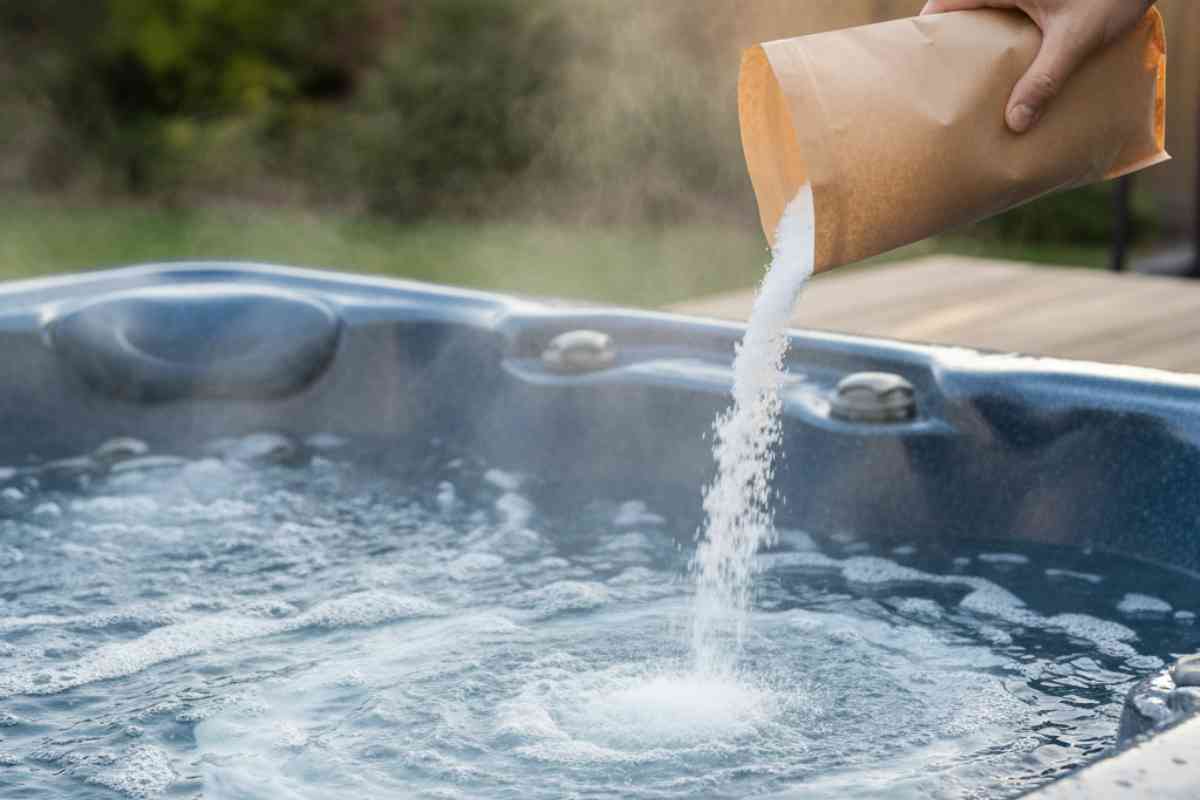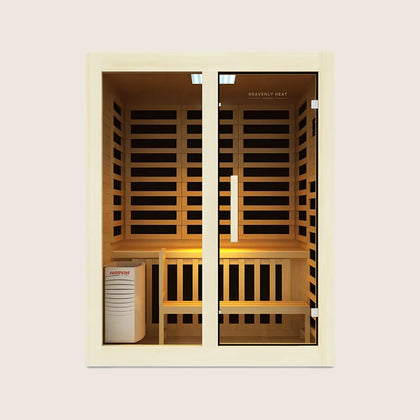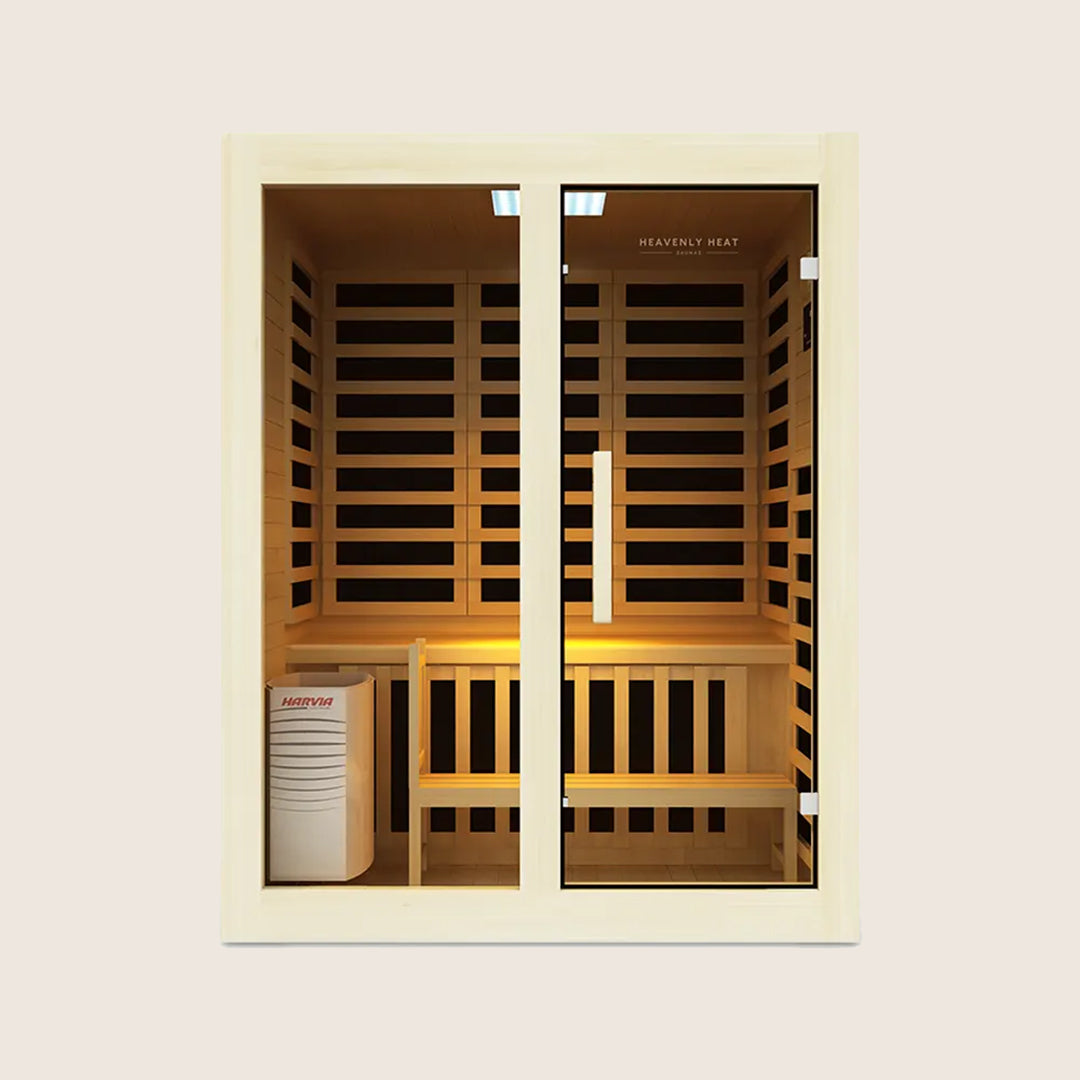Can You Put Epsom Salt in a Hot Tub Without Damaging It?

Thinking of adding Epsom salt to your hot tub for a relaxing soak? Before you toss in the crystals, it’s important to know how they affect your tub, water, and skin.
Using them incorrectly can damage equipment, upset water balance, or even void your warranty. Let’s explore how to enjoy Epsom salt safely.
Key Takeaways
Understand Epsom Salt: It’s magnesium sulfate, not table salt, and is commonly used for muscle relief, relaxation, and skin hydration.
Enjoy Hot Tub Benefits: Epsom salt can soothe sore muscles, reduce stress, improve skin, aid detoxification, enhance circulation, and lower inflammation.
Follow Safety Guidelines: Always check your hot tub’s manual before adding any salts or additives to avoid damage or voiding your warranty.
Measure and Add Carefully: Use the right amount of Epsom salt gradually, and maintain proper water chemistry to protect your tub and skin.
Clean and Maintain: Rinse your hot tub after use and monitor pH, alkalinity, and sanitizer levels to keep water safe and your equipment in good condition.

What is Epsom Salt?
According to WebMD, Epsom salt, also known as magnesium sulfate, is a chemical compound composed of magnesium, sulfur, and oxygen.
Despite its name, it is distinct from table salt and is commonly used in baths, as a laxative, or as a beauty product.
Epsom salt works by dissolving in water, releasing magnesium and sulfate ions. While absorption through the skin remains unproven, soaking in an Epsom salt bath is widely practiced for relaxation and minor symptom relief.
Notable benefits include:
Muscle relief: May ease soreness, cramps, and stiffness after exercise.
Stress reduction & sleep support: Magnesium contributes to neurotransmitter production, promoting relaxation and better sleep.
Digestive aid: Taken orally, it acts as a laxative by drawing water into the colon.
Skin soothing: Warm baths hydrate the skin and can help with itching or irritation.
Safety precautions: Avoid baths if you have open wounds, severe burns, or skin infections.
When taken orally, follow dosage instructions to prevent diarrhea or magnesium overdose.
Alternatives:
Oatmeal baths: Soothe irritated skin.
Baking soda baths: Help neutralize skin acidity and reduce itching.
Vinegar baths: Provide mild antibacterial effects.
Epsom salt is generally safe, inexpensive, and easy to use, making it a popular home remedy for relaxation and minor ailments.

Benefits of Using Epsom Salt in a Hot Tub
Soothes Sore Muscles
Magnesium sulfate, the main ingredient in Epsom salt, helps your muscles relax by calming inflammation, boosting blood flow, and easing tightness.
That’s why so many people turn to it after a long workout or a stressful day. In one study, arthritis patients who soaked in hot water with Epsom salt reported less pain and better movement than those who used plain water.
Another study on athletes found that hot water soaks, with or without Epsom salt, eased soreness and discomfort, making recovery feel smoother.
Relieves Stress and Promotes Relaxation
Magnesium in Epsom salt enters your body through the skin and helps calm your nervous system while loosening tight muscles.
This natural process makes your body feel lighter and your mind more at ease, which is why so many people turn to it after a stressful day.
According to Physical Medicine and Rehabilit, magnesium’s ability to relax muscles and ease inflammation plays a big role in reducing stress and boosting relaxation.
Softens and Improves Skin
Epsom salt can make your skin feel noticeably softer when added to a hot tub. The magnesium and sulfate in the salt draw moisture into your skin, helping with hydration.
Regular soaks can improve dry or rough patches, leaving your skin smoother and healthier.
It also gently exfoliates, removing dead skin cells and enhancing skin texture. People often notice softer hands and feet after just one soak.
By helping your skin retain moisture, Epsom salt encourages overall skin health. Your skin can feel rejuvenated, hydrated, and silky without harsh chemicals.
Aids Detoxification
Soaking in a hot tub with Epsom salt supports your body’s natural detoxification. The warm water and magnesium encourage sweating, which helps release toxins through the skin.
Epsom salt can also help flush out impurities absorbed from the environment. Magnesium plays a key role in supporting the lymphatic system, aiding toxin removal.
Regular soaks may even ease strain on kidneys by promoting overall cleansing. By combining relaxation with detox, your body feels lighter and refreshed.
Epsom salt baths offer an easy, gentle way to support your body’s natural purification processes.
Enhances Circulation
Good circulation helps your muscles relax and bounce back faster because it pushes fresh oxygen and nutrients where they’re needed most while flushing out waste that causes soreness.
This means less tightness and quicker recovery after stress or activity. According to Joicy et al., soaking in an Epsom salt bath improved blood pressure and heart rate, showing how strongly it boosts healthy blood flow.
Reduces Swelling and Inflammation
Epsom salt helps reduce inflammation by calming irritated muscles and joints. Magnesium in the salt works at a cellular level to ease swelling.
Soaking after exercise can reduce muscle soreness and joint stiffness, making recovery faster. Even minor aches and swollen areas benefit from a 15–20 minute soak.
Regular Epsom salt baths can make a noticeable difference in reducing chronic inflammation.
Combining warmth with the mineral benefits increases blood flow and comfort. Many people find that targeted soaks help inflamed areas recover more quickly while promoting overall relaxation.
How to Safely Use Epsom Salt in a Hot Tub?
Check Your Hot Tub’s Safety Guidelines First
Before adding Epsom salt to your hot tub, always check your spa’s safety guidelines. Most manufacturers do not recommend Epsom salt or other non-hot tub-grade salts like table salt, rock salt, or pink Himalayan salt.
These can introduce impurities, upset water chemistry, and even damage your spa, which could void your warranty.
Hot tub makers usually list approved chemicals to keep your equipment safe, so using anything else carries risk.
While health authorities like the CDC or the Pool & Hot Tub Alliance don’t specifically flag salt as a hazard, they do stress maintaining proper disinfectant and pH levels to prevent infections.
Saltwater systems help generate chlorine but still need careful upkeep, including monitoring salt levels, cleaning the salt cell, and occasionally adding sanitizer.
Salt can also corrode certain parts and affect plants nearby if splashed. Following manufacturer-approved products and regular maintenance ensures your spa stays safe, clean, and relaxing for every soak.
Measure the Right Amount of Epsom Salt
Epsom salt can be wonderfully relaxing, but using it safely is key. For a soothing bath, the Mayo Clinic suggests about 2 cups per gallon of warm water.
More than that can make the water slippery and dry out your skin. However, adding Epsom salt to a hot tub is not recommended.
Concentrations above 1,500 ppm can corrode metal parts like heaters and pumps. While some sources mention that levels up to 20,000 ppm are safe for single-use baths, these amounts are unsuitable for spa water that recirculates.
Overusing Epsom salt can also pose health risks—too much magnesium sulfate may cause serious side effects, especially if you have certain digestive conditions.
The safest approach is to follow package directions or your doctor’s advice and never exceed the recommended dose.
By keeping these precautions in mind, you can enjoy the relaxing benefits of Epsom salt without worry.
Prep Your Hot Tub Before Adding Salt
Before adding Epsom salt, make sure your hot tub water is properly balanced. Start by checking the pH and keeping it between 7.2 and 7.8 water that’s too acidic or too alkaline can irritate skin, harm metal parts, and reduce sanitizer effectiveness.
Total alkalinity acts as a buffer for pH, so aim for 80–120 ppm. Most hot tub guides suggest adjusting alkalinity first, then pH, and finally adding sanitizers like chlorine or bromine to keep the water safe and clean.
Improper balance can also affect how well Epsom salt dissolves and works, since pH, temperature, and other chemicals all play a role.
Always test your water, make adjustments as needed, and run the jets to circulate everything properly.
With this routine, your hot tub stays sparkling and safe, giving you a relaxing soak while enjoying the soothing benefits of Epsom salt.
Add Epsom Salt Gradually and Evenly
Add Epsom salt to your hot tub gradually and evenly. Adding too much at once can damage the tub or clog jets.
Use multiple small doses instead of one large amount. Stir the water or use a scoop to help the salt dissolve and prevent it from settling at the bottom.
Gradual addition keeps the water comfortable for your skin. Measuring tools ensure even distribution and make the process simple.
By following these steps, you protect your hot tub and enjoy a safe, relaxing soak every time.
Keep an Eye on Water Chemistry
When using Epsom salt in your hot tub, keep the pH between 7.2 and 7.8 and test it two to three times a week.
Epsom salt can raise total alkalinity, so adjust it carefully. Check sanitizer levels and test chlorine or bromine at least weekly, adjusting as needed.
Follow a routine of measuring pH, alkalinity, and sanitizer together to keep the water balanced, safe, and clear for every soak.
Clean Your Hot Tub After Use
Adding Epsom salt to your hot tub can be soothing, but it requires careful maintenance. If not cleaned quickly, leftover salts can corrode metal parts, gaskets, and heating elements, damage pumps and filters, and cause jets to stick or clog.
Over time, magnesium and sulfate can also create hard scale and oily residues that harm your tub’s surfaces and plumbing.
To prevent this, keep your water chemistry balanced: pH between 7.2–7.3, total alkalinity 80–120 ppm, and calcium hardness 150–250 ppm.
Use scale inhibitors, plumbing cleaners, and pre-filters to reduce mineral buildup. Regular care, including draining and refilling your hot tub every 3–4 months, or more often for frequently used tubs, removes salts, oils, and other residues.
Always flush plumbing lines and clean the shell, jets, and filters after using additives, following your manufacturer’s guidelines to protect your equipment, extend its life, and avoid expensive damage.
FAQ
Will Epsom salt harm hot tub jets or filters?
Epsom salt can damage hot tub jets, filters, and surfaces by causing corrosion, clogging, chemical imbalances, and frothing. Its magnesium and sulfate ions harm metal components, while oily residue disrupts pH, clogs filters, scratches acrylic, and reduces sanitizer effectiveness. Use spa-specific products instead.
Does Epsom salt affect hot tub pH or alkalinity?
Epsom salt, or magnesium sulfate, can disrupt hot tub pH and alkalinity, reducing sanitizer effectiveness, promoting bacteria growth, and causing potential corrosion of components. High dissolved solids from large amounts may cloud water and void warranties. Avoid Epsom salt; use spa-specific alternatives or drain and refill if added.
Does Epsom salt make the water feel softer or slippery?
Epsom salt, also known as magnesium sulfate, can make bathwater feel softer and slightly slippery, creating a soothing, silky sensation on the skin. Magnesium, the main mineral in Epsom salt, plays a role in over 600 bodily processes, including muscle relaxation and supporting skin health, while helping maintain the skin’s natural barrier. When added to water, Epsom salt can temporarily soften hard water by replacing calcium and magnesium ions, reducing the drying, rough feeling that hard water often leaves behind. Softer water also helps soap lather more easily, leaving the skin cleaner and smoother with less effort. Insights from the Indian Dermatology Online Journal suggest that mineral-rich salts like Epsom salt may support skin barrier repair and improve hydration. Although research specifically on Epsom salt baths is limited compared to Dead Sea salts, many people notice gentler skin and relief from conditions like eczema or psoriasis. Overall, adding Epsom salt to your bath is a simple, relaxing way to soften water and nourish your skin.
Is it safe to use Epsom salt in inflatable or acrylic hot tubs?
Using Epsom salt in inflatable or acrylic hot tubs is unsafe, as it can corrode metal parts, disrupt water chemistry, interact with sanitizers, and void warranties. Instead, follow manufacturer guidelines and use spa-specific salts or safe aromatherapy products for maintenance and a relaxing experience.
How do I know if I’ve added too much Epsom salt?
You'll know you've added too much Epsom salt if you notice skin irritation, dryness, dizziness, diarrhea, bloating, or vomiting. For plants, signs include stunted growth, yellowing leaves, or nutrient imbalance. Reduce usage, stay hydrated, and seek medical help for severe symptoms.
Will adding Epsom salt void my hot tub warranty?
If you’re thinking about adding Epsom salt to your hot tub, it’s important to know that most major manufacturers—including Jacuzzi, Sundance, and Hot Spring—strongly advise against it. Jacuzzi notes that salt levels over 1,500 ppm can corrode metal parts like heaters and pumps. Arctic Spas has similar rules: their Onzen™ and Spa Boy systems require only Arctic Pure brand salt, and using water with salt levels outside the recommended 2,000–2,500 ppm range can void your warranty. Any damage caused by unapproved salts or imbalanced water—like problems with heaters, jets, pumps, or seals—is not covered. Warranties may also exclude labor for retrofitted systems, leaving spa owners responsible for keeping the water properly balanced. In short, adding Epsom salt or other unapproved minerals might cause corrosion or damage and could void your warranty. To protect your spa, stick to the manufacturer-approved salts and follow their water care guidelines.
Can you put essential oils in a hot tub?
No, you cannot put regular essential oils in your hot tub as they can clog filters. Use spa-friendly aromatherapy products instead. Precautions: add small amounts, avoid daily use, and rinse the tub afterward. Benefits include relaxation, stress relief, and a pleasant scent.
Can you put a bath bomb in a hot tub?
Bath bombs are a fun way to make a regular bath more relaxing, fizzing and releasing soothing scents thanks to ingredients like baking soda, citric acid, salts, fragrances, and colors. The fizzing comes from a reaction between baking soda and citric acid, creating bubbles that feel luxurious in a tub. But hot tubs are a different story. Oils, fragrances, and colorants from bath bombs can upset the chemical balance of the water, clog filters, damage pumps, and even harm jets or plumbing. The fizz can also create excessive foam, which can be messy or unsafe. Experts and manufacturers recommend skipping bath bombs in hot tubs. Instead, try spa-safe aromatherapy products like liquid essences or crystals. These are designed to enhance your soak safely, keeping your hot tub clean and fully functional while still letting you enjoy a soothing, fragrant experience.
Can you put chlorine in a hot tub?
Yes, adding chlorine keeps hot tub water clean, kills bacteria, and prevents algae. Avoid over-chlorinating, store safely, and test water regularly. clearer water, reduced illness risk, and a more enjoyable soaking experience.






























